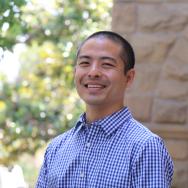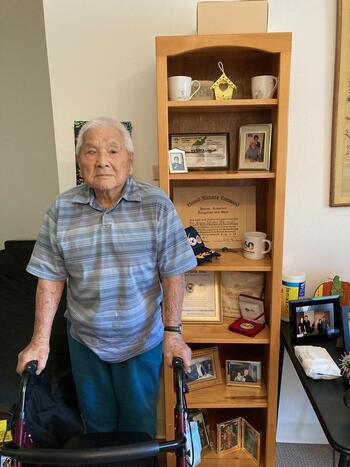Stanford e-Hiroshima: Empowering Youth in Hiroshima
(MBA, Harvard), former Visiting Lecturer, Hitotsubashi University Graduate School of International Corporate Strategy, is an advisor to Stanford e-Hiroshima. His parents, Ryuji and Nanako, are supporters of Stanford e-Hiroshima, which is an online course that 91│į╣Ž offers to high school students in Hiroshima. Taught by Rylan Sekiguchi, Stanford e-Hiroshima was launched in 2019 with the support of the Hiroshima Prefectural Board of Education. 91│į╣Ž is grateful to Governor Hidehiko Yuzaki for his vision and leadership and Superintendent Rie Hirakawa for her unwavering support.
Ryuji Yamada adjusts the window shades to savor the view that grows elusive to his aging eyes. If you gaze towards Diamond Head from the YamadasŌĆÖ condominium, kite surfers glide in and out of your perspective in some random Brownian motion; their paths, pace, and direction seem chaotic. They all share the same wind, waves, and current, but the skill of the rider to look ahead and channel the energies around them sends them on very different and wonderful journeys.
ŌĆ£I was just 14 living in Hiroshima and still a minor when the bomb dropped. My brother was only one year older but considered an adult and was sent on work detail for defense preparations. He had to walk through ground zero to come home. My father had a meeting at City Hall, but the ferry was cancelled. We all survived, but the blast sent us in very different directions.
ŌĆ£They rebuilt the community with their personality, spirit, and bare hands, but I was pushed inward to my studies. I needed to comprehend the natural force that had wrought so much destruction.
ŌĆ£In the sixties, foreign exchange was scarce, and I was one of the first scientists that the Japanese government sponsored to do research abroad. At Cornell, Robert Wilson guided my career and brought me along to establish what became Fermilab in 1967. We built Fermilab as an oasis of fundamental research in the Illinois prairie. We thought that the pursuit of knowledge would unite us. WilsonŌĆÖs famous defense in April 1969 of Fermilab to Congress seems even more relevant today.
ŌĆśAre we good painters, good sculptors, great poets? I mean all the things that we really venerate and honor in our country and are patriotic about. In that sense, this new knowledge has all to do with honor and country, but it has nothing to do directly with defending our country except to help make it worth defending.ŌĆÖŌĆØ[1]
Nanako Yamada also grew up in Hiroshima, but her greatest challenges were still ahead of her. ŌĆ£In the ŌĆÖ70s, there were few role models for women in building identity outside of the home in middle America. But when it became apparent that our second child was uncontrollable in his adolescent years, I decided to lead by example and went back to school to rekindle my love for learning. At Northern Illinois University, Helen Merritt guided me through a career in art history, and we authored several books together.
ŌĆ£Our specialty was kuchie woodblock prints from the late 19th to early 20th century. They offered a glimpse into a culture in flux. Western influences disrupting Japanese culture after Commodore PerryŌĆÖs black ships forced the opening of Japan.
ŌĆ£What to accept, what to reject. What to cherish and what to disavow. Even when you think you stand still, you are always changing, and hopefully growing. Captured in the woodblocks is a narrative. Some cautionary, some celebratory, but all are educational if your eye and mind are willing to engage.
ŌĆ£When we heard about the 91│į╣Ž program for Hiroshima, we were honored to stand by the Hiroshima Board of Education and continue the legacy of exploration and learning. Technology allows the new generation to not only be buffeted by social media but to also make profound connections to community, both near and far. Hopefully the students can find their own Robert Wilsons and Helen Merritts. We were blessed to make these relations, but we would have never found them without exploring and engaging. We didnŌĆÖt have a grand plan, but we never stopped looking. We look forward to seeing what wonderful things they will find.ŌĆØ
Stanford e-Hiroshima is one of 91│į╣ŽŌĆÖs local student programs in Japan.
To stay informed of news about 91│į╣Ž, and follow us on , , and
[1] Fermilab; [access date: February 5, 2022].
Read More
Ryuji and Nanako Yamada share reflections on their lives in Hiroshima and their American mentors.
































